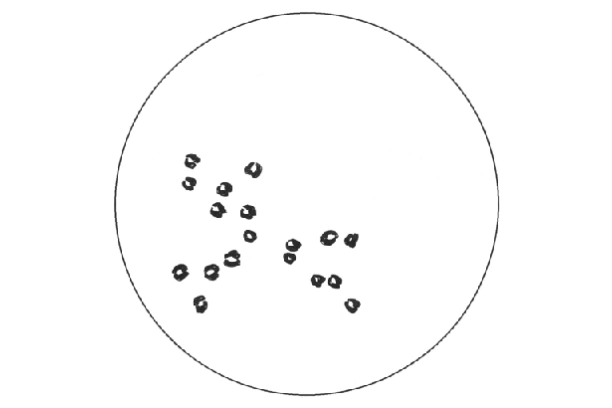
The door of Ch’an is entered by Wu. When we meditate on Wu we ask “What is Wu?” On entering Wu, we experience emptiness; we are not aware of existence, either ours or the world’s.
E-MAIL: admin@relaxmid.com

In the second picture, the ox herder sees the tracks of the ox. The ox herder has not seen or found the ox, but he has discovered tracks ─ some going eastward, some westward, others going in many directions and then stopping suddenly. The ox (mind) is still undisciplined, and has a wandering, erratic nature. Seeing the tracks increases the ox herder’s confidence that the ox exists, and that it can be found.
The second picture describes the person who has come in contact with an enlightened master, or who has read about enlightenment in Buddhist sutras or lectures. He believes more strongly that Buddha nature is real, and that Sakyamuni Buddha and the great patriarchs existed. He realizes that those who attained enlightenment in the past were ordinary people like himself, and so he believes that he can attain enlightenment, too. He begins to practice with greater faith and diligence.
At this level, sometimes efforts are rewarded and sometimes they are not. At times a person will feel confident: “Yes, I can achieve enlightenment.” Other times he or she will feel despondent: “I’m not a good practitioner. I’m dull and slow, and I don’t have a lot of potential.”
The person’s practice will be erratic. Sometimes he’ll practice hard, and other times he’ll grow lax and drop the practice. But there are people who will always be firm in their determination to practice. What kind of person are you?
Student: Shih-fu, you speak about enlightenment, but today in America there are people handing out little diplomas saying, “If you follow my teaching, you’ll get enlightened.” The word enlightenment seems to have lost its meaning.
Shih-fu: I have always said we should emphasize the process, not the final result. In fact, the process itself is the final result.
Enlightenment is discussed in books, but it does seem to be unclear exactly what constitutes enlightenment, and how difficult it is to achieve it. Some books or people make it seem like it is a simple thing to accomplish. Whether enlightenment is easy or difficult to achieve depends on the practitioner.
One discourse in the Buddhist texts describes sixteen different types of enlightenment. There are experiences where one has not actually seen the true nature. There are experiences where one does see the true nature, but the experience recedes. And then there is great enlightenment, which is complete and permanent.
Many of these so-called enlightenment experiences are physiological and psychological responses which rise in the body and mind as a result of practice. Some people feel a sense of joy, or feel that the body and mind have been liberated. Are these true enlightenment experiences? No, not according to Ch’an.
They are just feelings, emotional states. However, they are valuable experiences. It’s permissible to call these enlightenment experiences, because during such times the person’s mind is different than it usually is. The mind is brighter, and for a while the person may have no vexation. But after a few days, hours, or even minutes, the person will encounter something that gives rise to greed or aversion, and again vexations will appear.
There are many people who, when they refer to Ch’an enlightenment, are actually referring to these sort of experiences. However, if such a person were to ask for affirmation from a capable Ch’an master, the master would probably scold him rather than acknowledge the experience. Acknowledging false enlightenments does more harm than good.
True enlightenment is seeing into your self-nature, and achieving a mind of equanimity. The nature of the mind of equanimity is empty. Emptiness means that the mind does not exist, so if a person thinks he has been enlightened, yet he feels elated, or believes he has accomplished something great, then he hasn’t seen his self-nature.
The best attitude is to understand and accept that it is the process of practice which is important, not the end result. As the ox herding pictures illustrate, the main objective is seeing into your self-nature. But, even after seeing your self-nature, there is still a lot of work to be done. Remember, in this picture, the ox herder has only seen tracks, and not the ox itself. Do not mistake the tracks for the ox.
PREVIOUS: The First Picture | Ox Herding at Morgan’s Bay
NEXT: The Third Picture | Ox Herding at Morgan’s Bay
